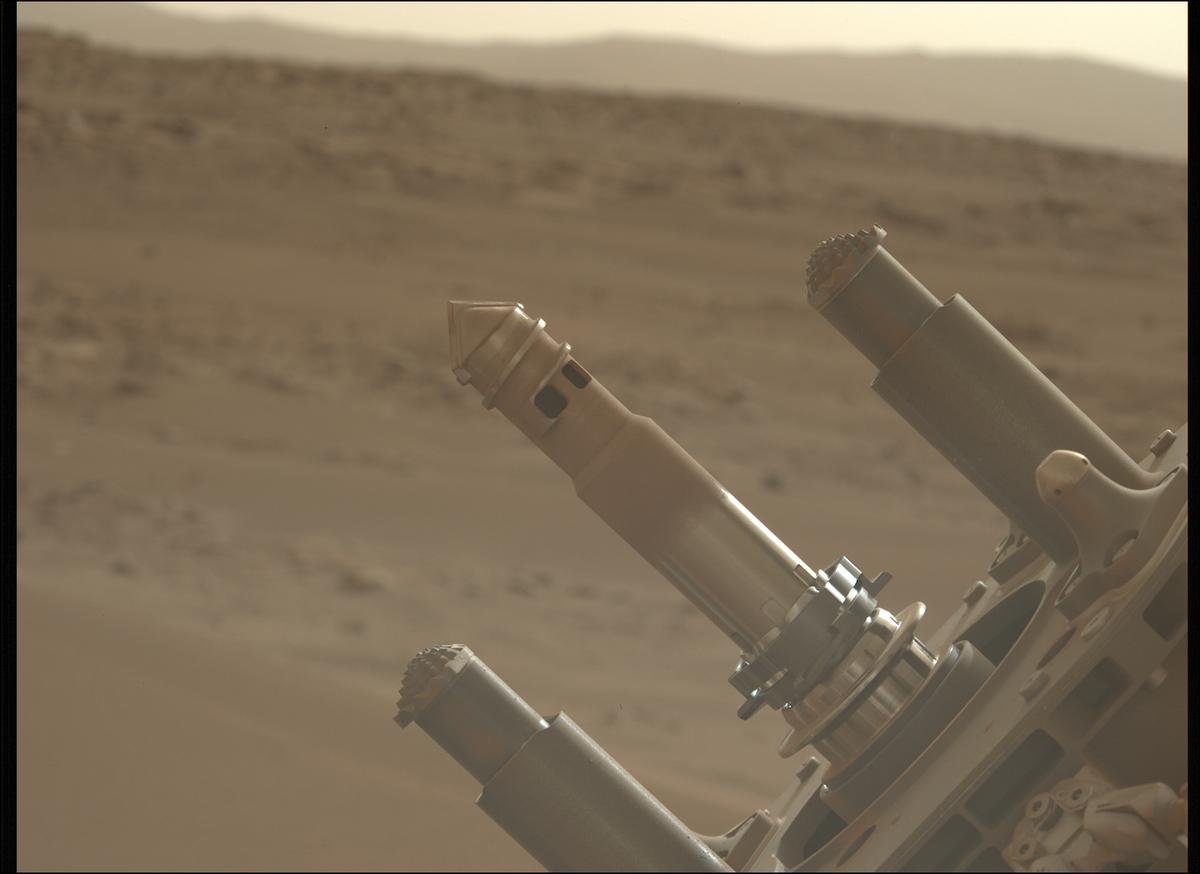3 min read

The Perseverance rover recently collected its first two samples of Martian regolith! Regolith is dust and broken rock, and collecting it requires a different approach than collecting rock cores.
To start with, regolith sampling uses a different bit than rock sampling. The back of the regolith bit is very similar to a coring bit – it uses the same type of sample tube and interfaces with the drill the same way. However, the rest of its features are uniquely designed for sampling loose material. It is closed in the front and instead has two small inlets on the side. To sample regolith, these inlets are submerged below the surface so regolith can flow into the hollow tip. The inlets are sized so that every particle or pebble the bit retains will fit inside the sample tube.
The robotic arm and drill also operate in a different way for regolith sampling. When sampling a large pile of regolith like a dune, there is no firm surface to push the stabilizers against. Instead, the turret hovers over the surface, and the drill feed extends the bit out a pre-determined distance to contact the regolith. From there, it moves through the following steps:
- Insertion: The drill percusses and rotates the bit while moving it 65mm into the regolith. The motion helps the regolith act more like a fluid, increasing the flow into the bit. The tooth on the front of the bit breaks up any crust that may have formed on the surface of the regolith, and the flutes help channel material into the inlets.
- Collection: While the drill continues to hammer and spin the bit, the turret rotates 5 degrees in each direction to sweep through the regolith. If insertion caused the regolith to form walls around the bit rather than flow into it, this step disrupts the walls and ensures sample enters the bit.
- Retraction: The drill makes sure the inlets are pointing up relative to gravity so that no sample is dropped, then slowly retracts from the regolith.
- Leveling: The robotic arm moves the bit away from the regolith, points it down relative to gravity, then percusses for five seconds. This causes any accumulated regolith to fall off the outside of the bit, and also makes sure the tip of the bit is only full up to the inlets. This keeps the sample tube from being overfilled.
- Ingestion: Now the sample needs to get from the tip of the bit to the sample tube. The turret rotates the bit upside down with occasional bursts of percussion to make the regolith flow into the tube. The motions are carefully controlled to keep the inlets pointing up so no sample can fall out.
After that, the rover can begin the process of returning the bit to the bit carousel, where the tube will be extracted, imaged, and sealed.
All these steps went very smoothly for both regolith collections! Each sample was about 53mm of height in the sample tube, or roughly 7 cubic centimeters of material.
Written by Iona (Brockie) Tirona, Sampling Engineer at NASA's Jet Propulsion Laboratory







